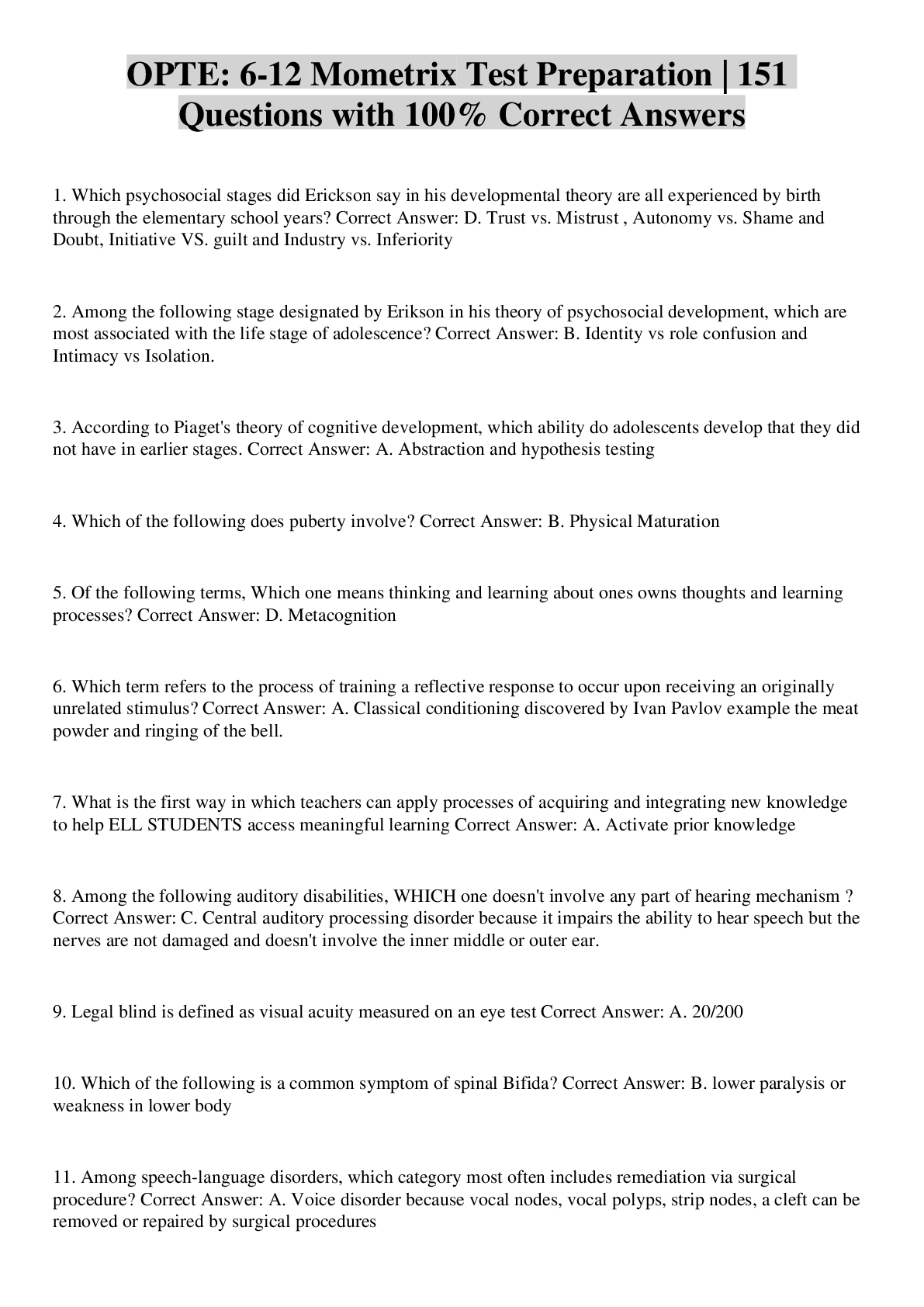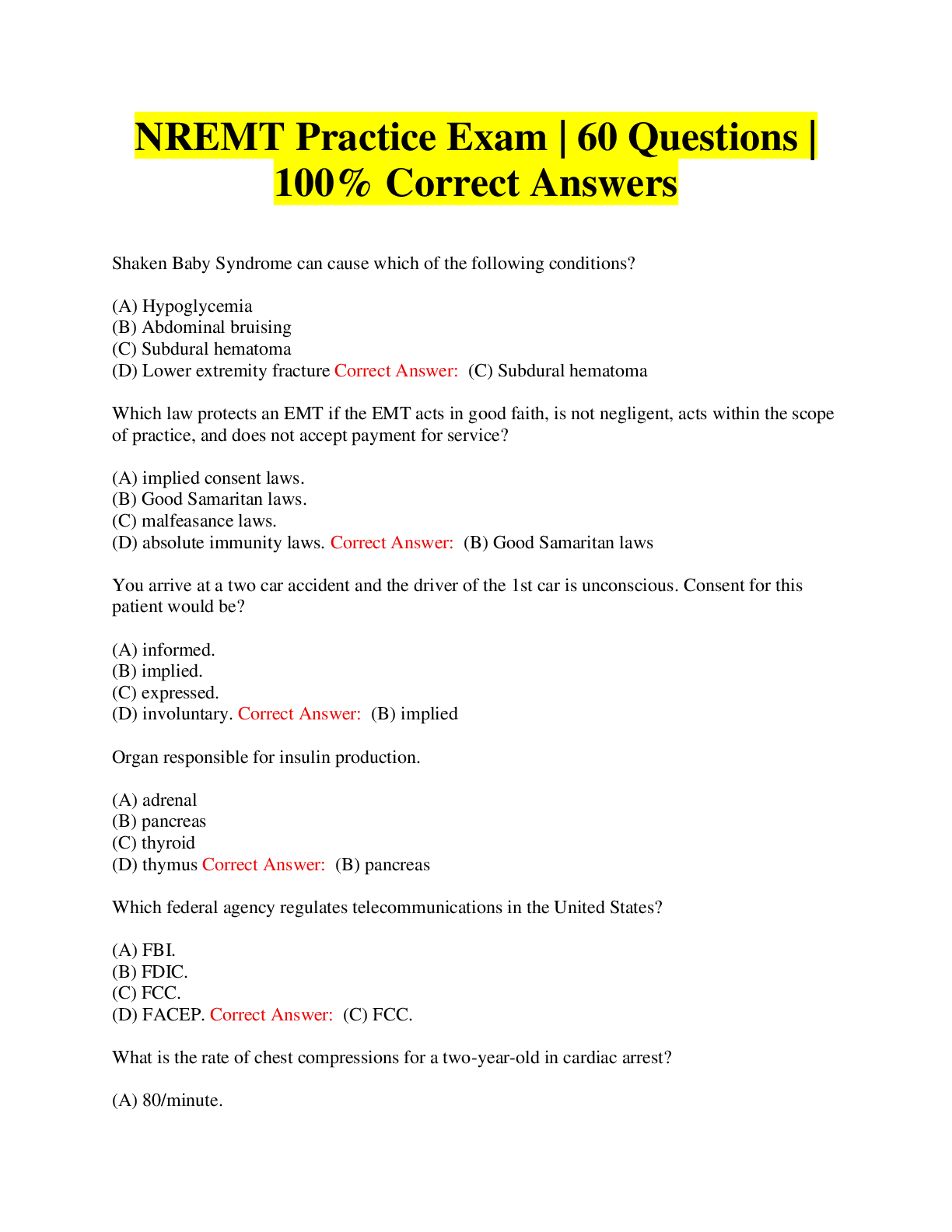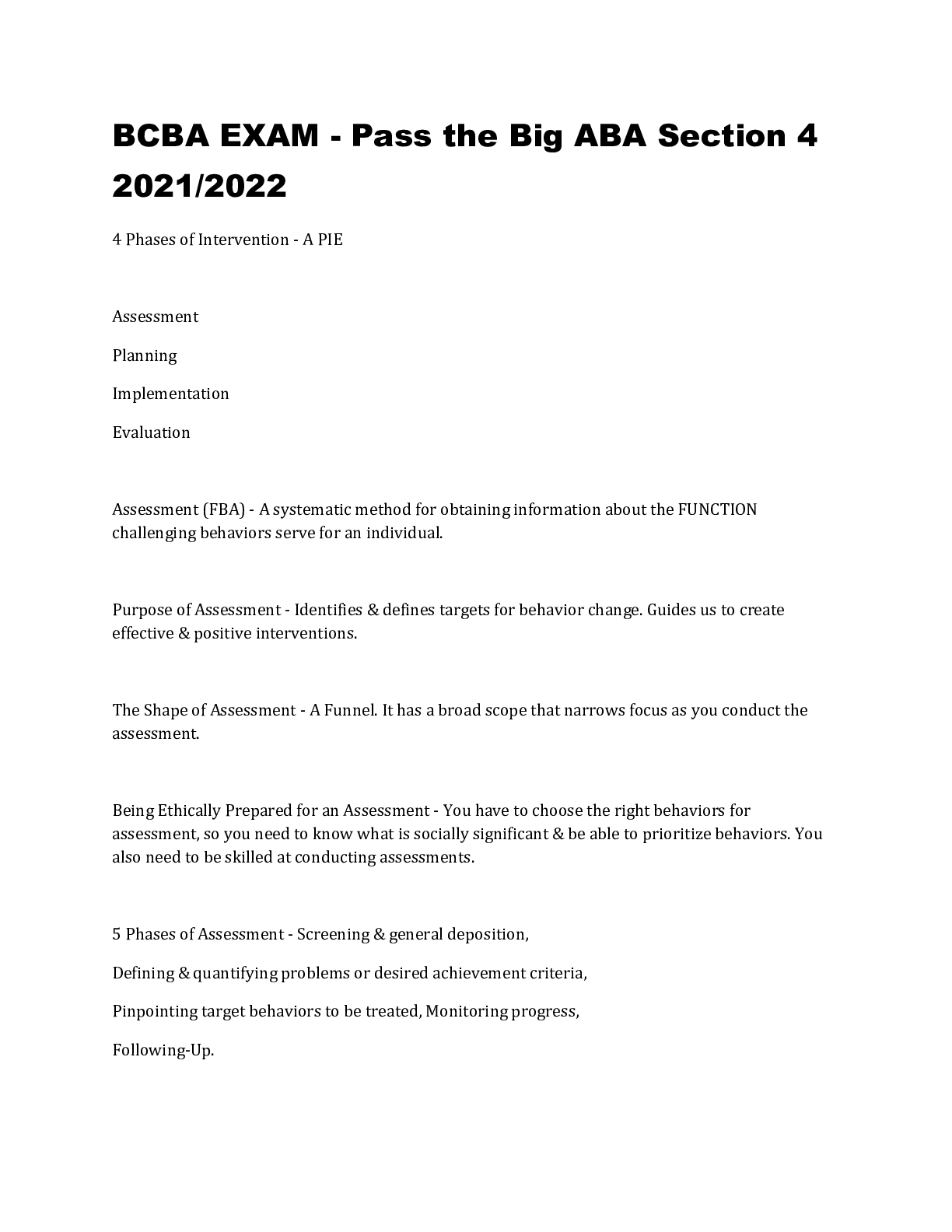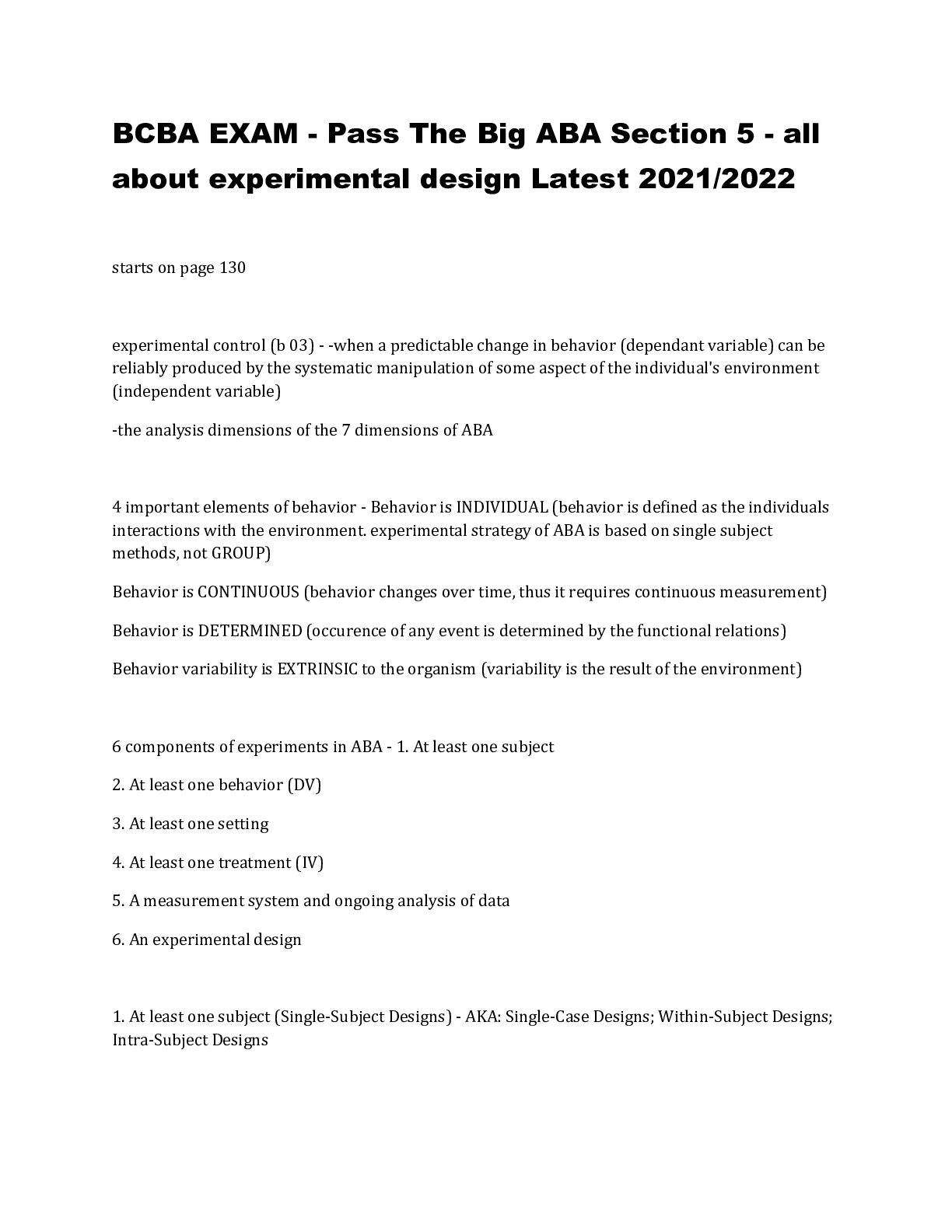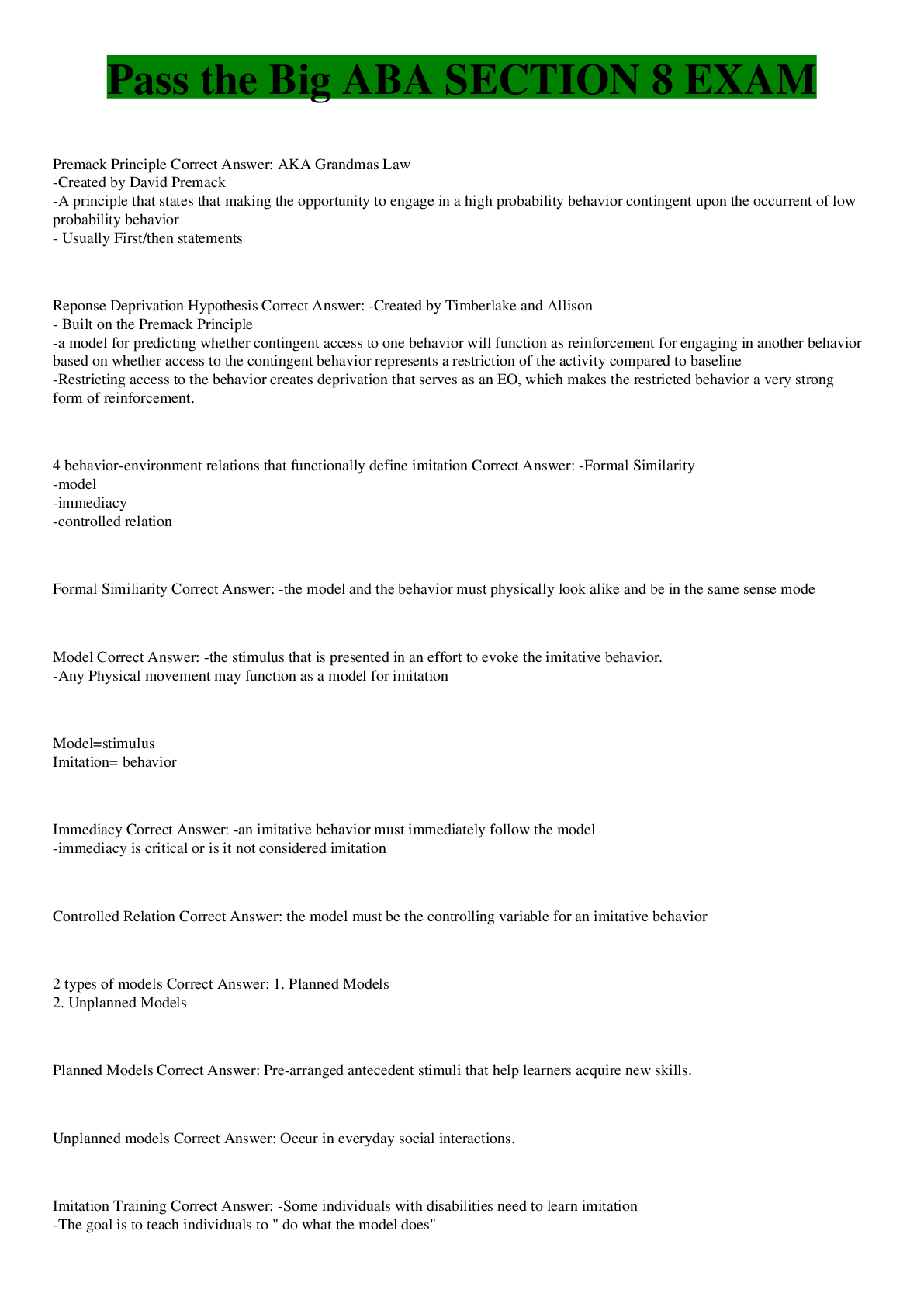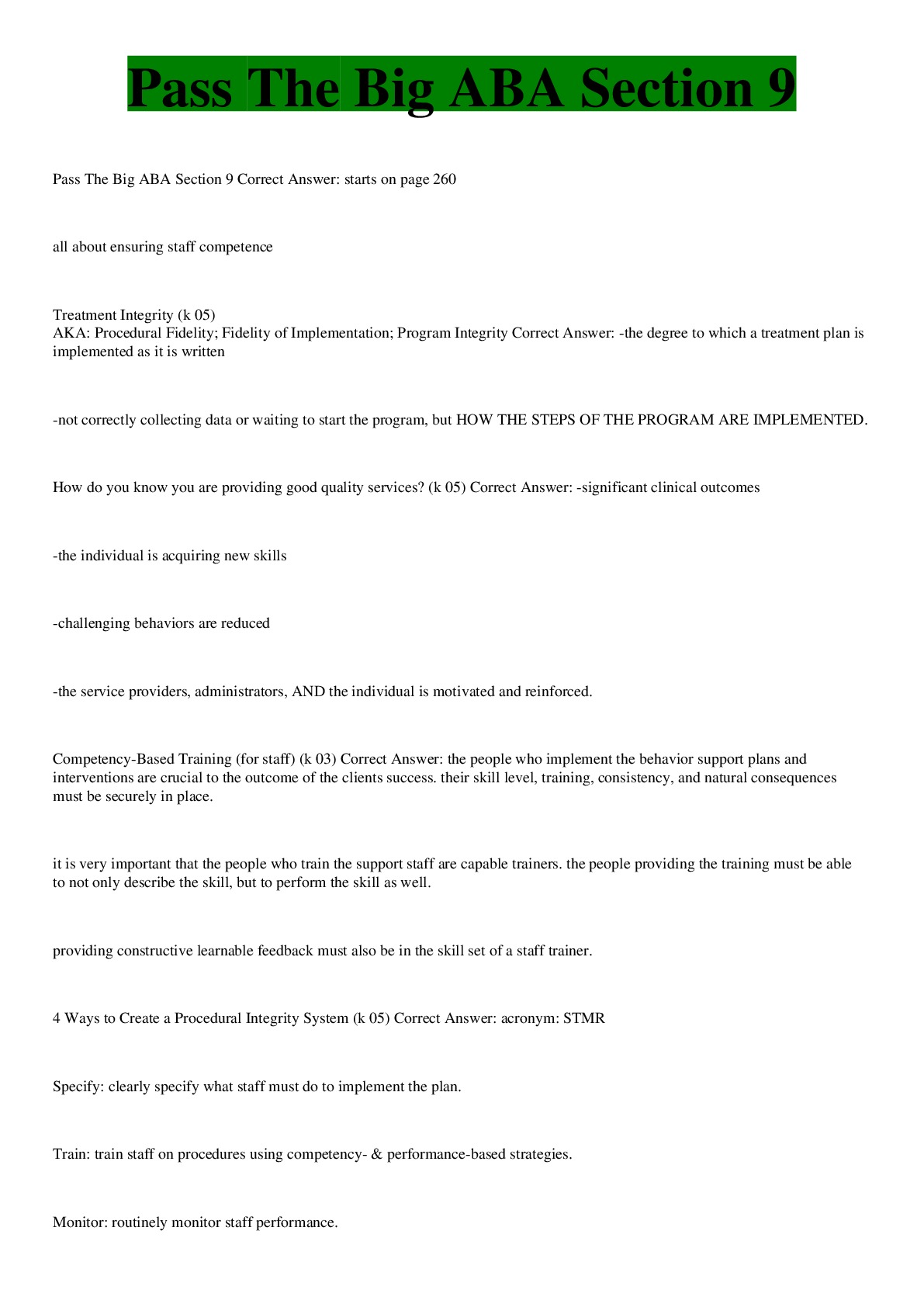Health Care > EXAM > Pass the Big ABA Section 4: Assessment (TaskList-I) 12 Questions At BCBA Exam (All)
Pass the Big ABA Section 4: Assessment (TaskList-I) 12 Questions At BCBA Exam
Document Content and Description Below
Pass the Big ABA Section 4: Assessment (TaskList-I) 12 Questions At BCBA Exam 2 Procedures for Identifying Effective Reinforcers ans: Stimulus Preference Assessment Reinforcer Assessment 2 ... Types of Functional Analysis ans: extended functional analysis brief functional analysis 3 Basic Methods of Stimulus Preference Assessment ans: Asking About the Stimulus Preference Free-Operant Observation Trial-Based Methods 3 Characteristics of Good Operational Definitions ans: OCC objective clear complete 3 Data Collection Methods for Descriptive FBAs ans: ABC Continuous Recording ABC Narrative Recording Scatter Plot 3 Factors of Social Validity ans: social significance of your goals social appropriateness of the procedures social importance of the effects 3 Types of Trial Based Methods of Stimulus Preference Assessment ans: PMS Paired Stimulus (Forced Choice) Multiple Stimulus Single Stimulus (Successive Choice) 4 Functions of Problem Behavior ans: SEAT sensory escape attention tangible 4 phases of intervention ans: APIE assessment planning implementation evaluation 4 typical original conditions of functional analysis ans: 3 test conditions and 1 control condition 1. Contingent attention (AKA: social disapproval condition) 2. contingent escape (AKA: academic demand condition) 3. Alone 4. Control (AKA: play condition) behaviors are low in this UNSTRUCTURED condition because reinforcement is freely available Iwata NOTE: 5th condition: Tangible-used only if you suspect the clients problem behavior to serve the function of attaining access to a tangible conducted one at a time in an alternating sequence until a pattern of problem behavior occurs. 4 Ways to Acquire Information for Assessment ans: COIT checklists observation interviews tests 5 phases of assessment ans: 1. screening and general deposition 2. defining and quantifying 3. pinpointing target behaviors to be treated 4. monitoring progress 5. following-up ABC Continuous Recording ans: like a check list! record occurrences of targeted problem behaviors and selected environmental events within the natural routine during a specified period of time all ABC data should be recorded for a minimum of 20-30 minutes ABC Narrative Recording ans: data are collected only when behaviors of interest are observed recording is open ended you can calculate conditional probability with this method too less time consuming Advantages of ABC Continuous Recording ans: Advantages of ABC Continuous Recording ans: uses precise measures provides useful contextual information and correlations regarding environmental events and the problem behavior, which can provide useful information for later functional analysis calculates conditonal probabilities (correlational data) Advantages of Functional Analysis ans: clear demonstration of variables that relate to problem behavior standard to which all other forms of FBA are evaluated enables development of effective reinforcement based treatment Advantages of Indirect FBA ans: contributes to hypothesis development about what may be maintaining problem behavior simple to use because they do not require observations advantages of scatter plots ans: identifies time periods when the problem behavior occurs can be useful to pinpoint periods of the day when more focused abc assessments can be conducted aka for assessment ans: functional behavior assessment FBA AKA's for direct descriptive FBA ans: descriptive assessment direct assessment AKAs for ABC Narrative Recording ans: Sequence Analysis ABC descriptive narrative data AKAs for Functional Analysis ans: FA Experimental Analysis Analog Assessment anecdotal observation ans: aka ABC recording temporally sequenced description of behaviors requires total attention of observer for at least 20-30 minutes continuously keep it observable and measurable carry out several days so reactivity effects can decrease Asking About the Stimulus Preference ans: ask the target person ask the significant other offer a pre task choice assessing the social significance of potential target behaviors ans: consider whose behavior is being assessed and why do not change behaviors for the benefit of others or because of yourself always ask yourself, to what extent will the proposed change improve the persons life? assessment ans: a systematic method for obtaining information about what the function of the behavior is it allows empirically based hypothesis about why behavior occurs based on data Assessment is Ongoing ans: Assessment is one of the 6 Client Basic Rights behavior is dynamic behavior cusps ans: behaviors that OPEN a persons world to N [Show More]
Last updated: 2 years ago
Preview 1 out of 17 pages

Buy this document to get the full access instantly
Instant Download Access after purchase
Buy NowInstant download
We Accept:

Reviews( 0 )
$8.00
Can't find what you want? Try our AI powered Search
Document information
Connected school, study & course
About the document
Uploaded On
Sep 16, 2022
Number of pages
17
Written in
Additional information
This document has been written for:
Uploaded
Sep 16, 2022
Downloads
0
Views
51

